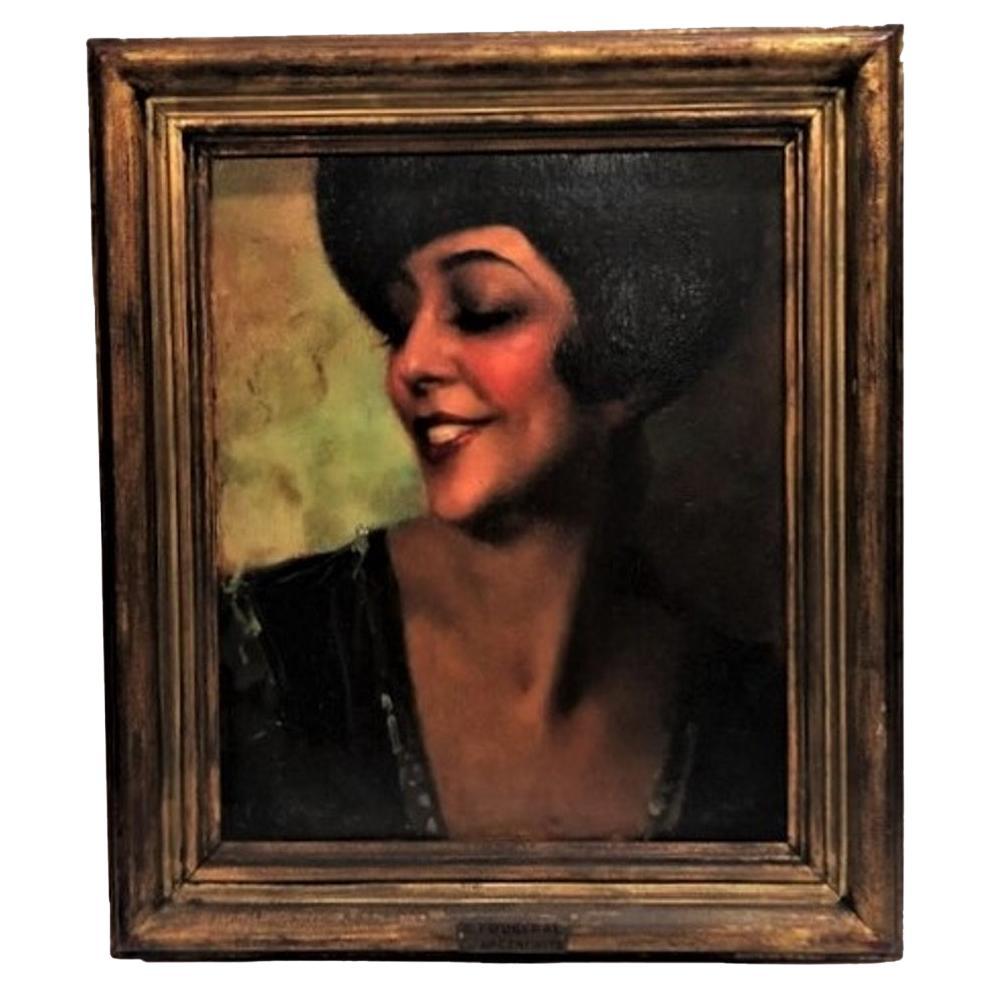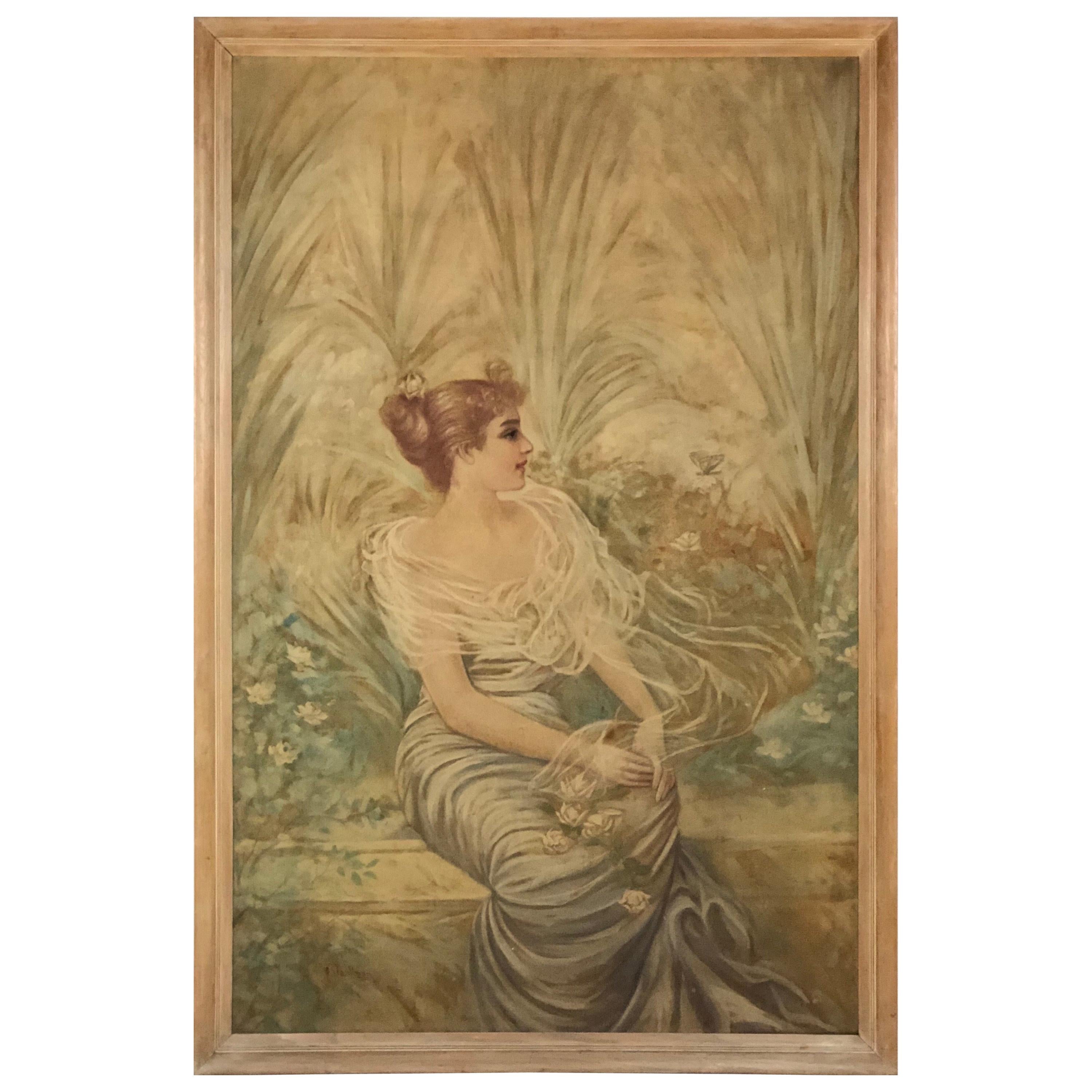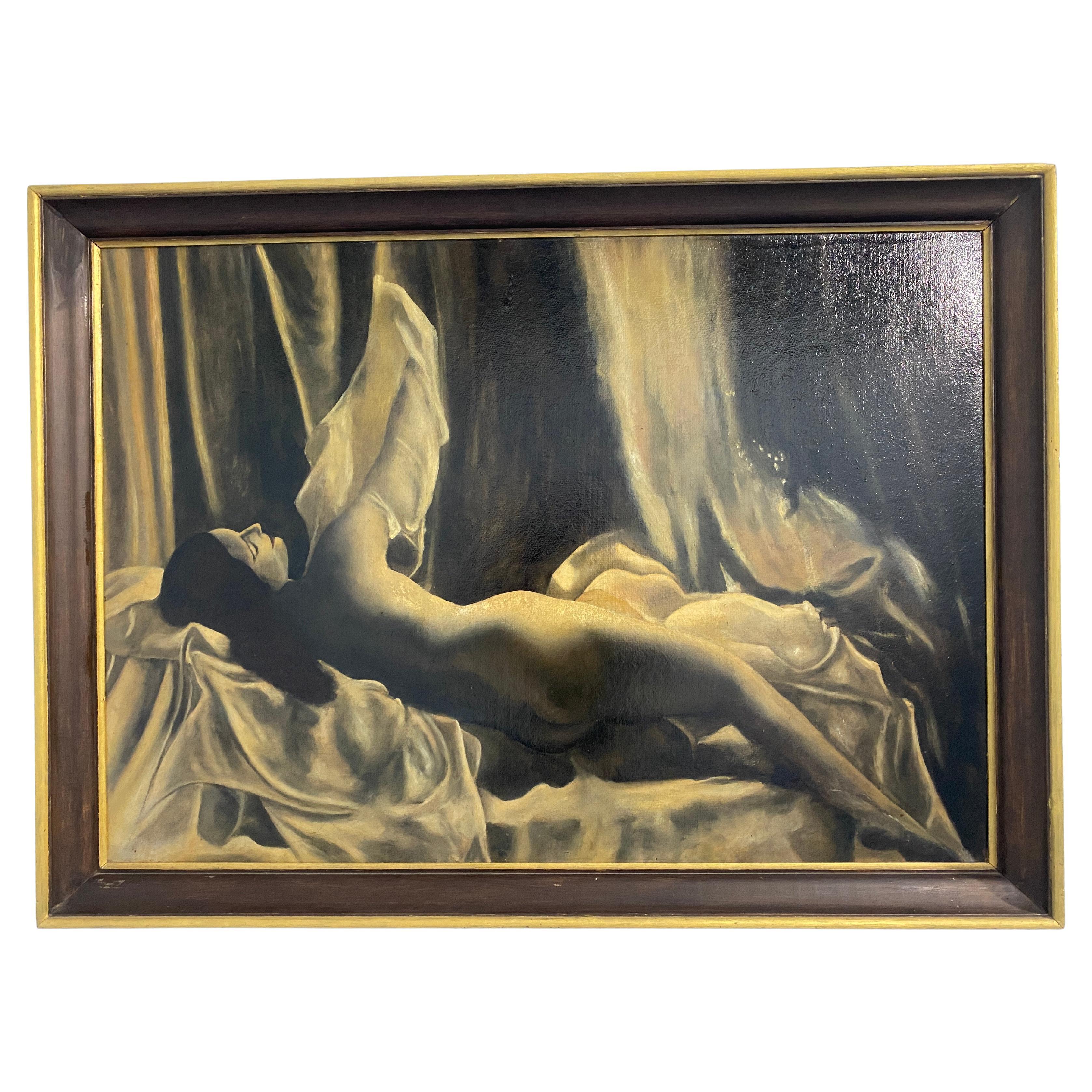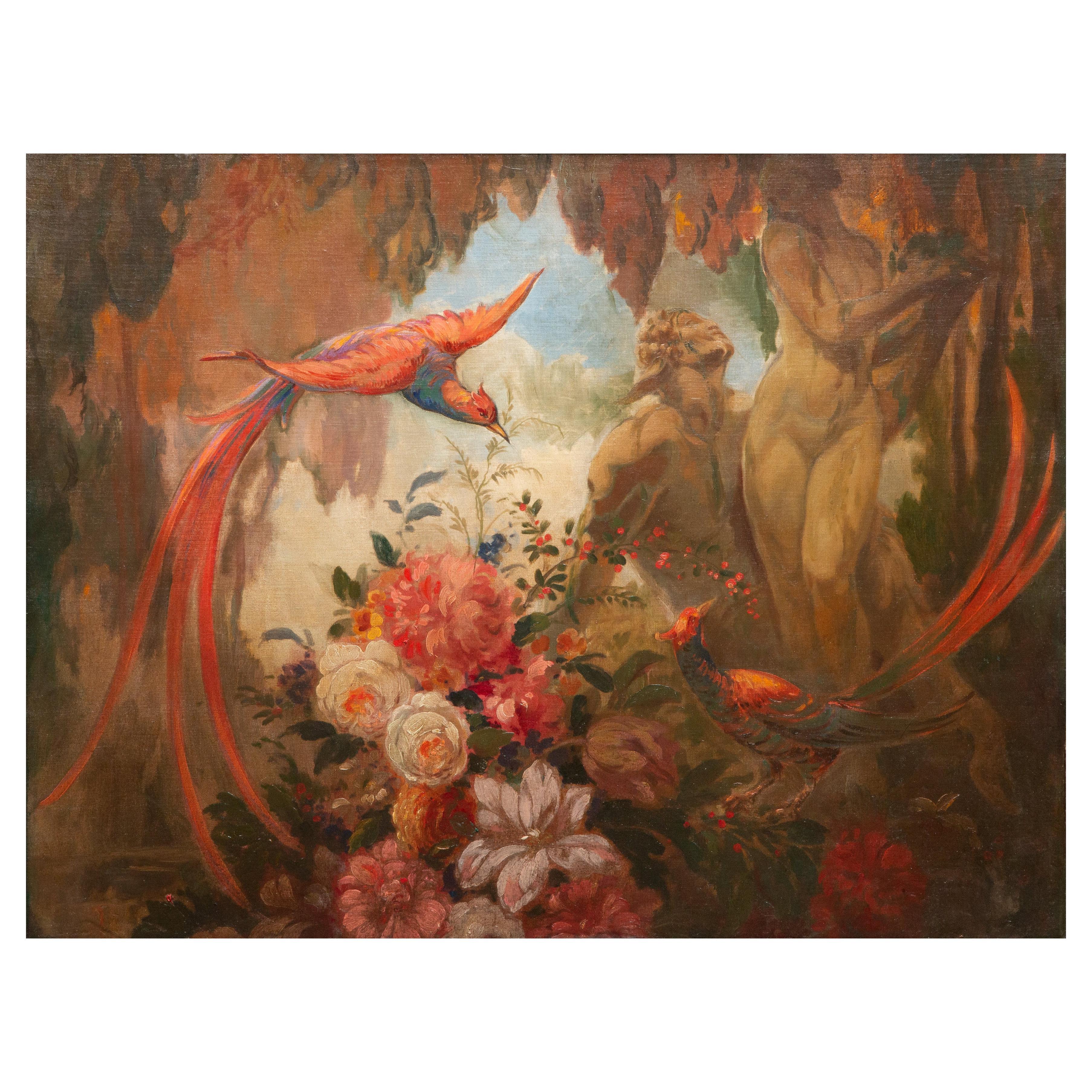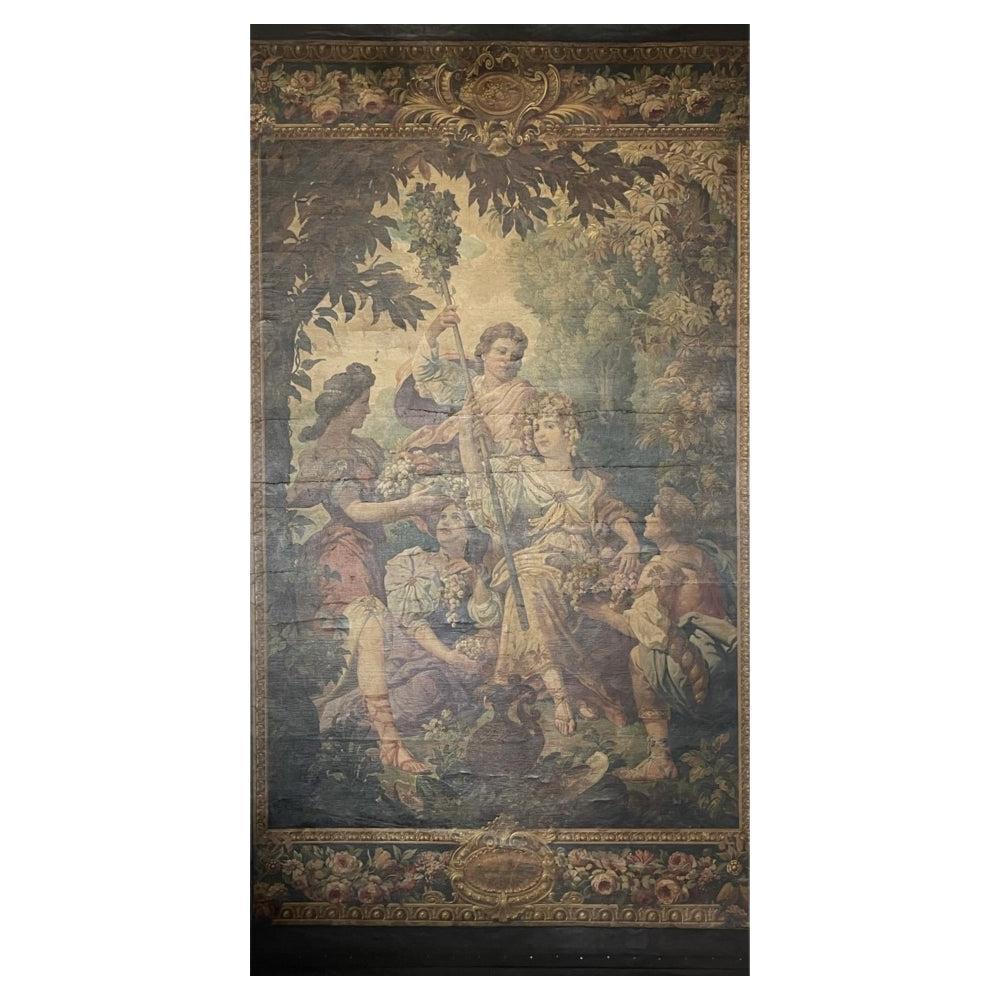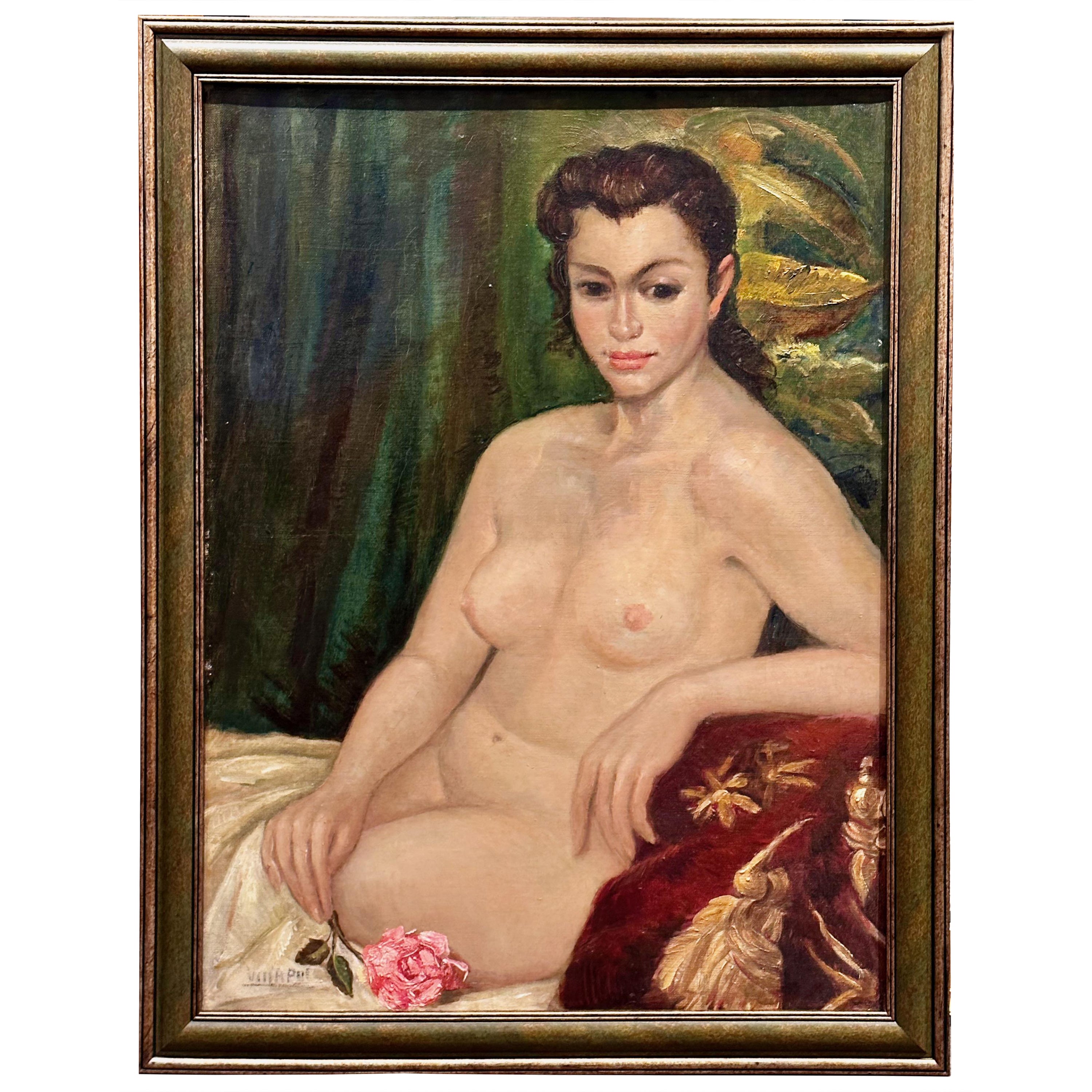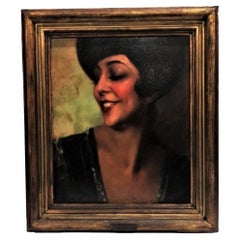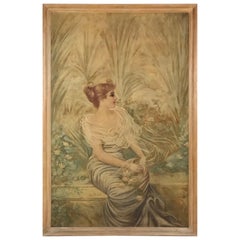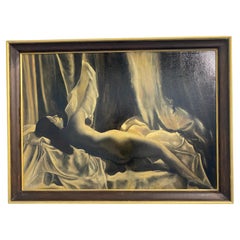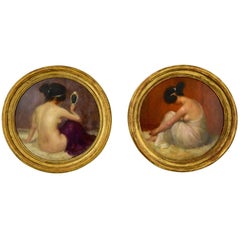
Art Nouveau Pair Oil Paintings with Nudes Emmanuel Fougerat 1900 France
View Similar Items
Want more images or videos?
Request additional images or videos from the seller
1 of 9
Art Nouveau Pair Oil Paintings with Nudes Emmanuel Fougerat 1900 France
About the Item
- Creator:Emmanuel Fougerat (Artist)
- Dimensions:Height: 10.63 in (27 cm)Diameter: 10.63 in (27 cm)Length: 10.63 in (27 cm)
- Sold As:Set of 2
- Style:Art Nouveau (Of the Period)
- Materials and Techniques:
- Place of Origin:
- Period:1900-1909
- Date of Manufacture:1900
- Condition:
- Seller Location:Antwerp, BE
- Reference Number:1stDibs: LU931013157041
About the Seller
5.0
Platinum Seller
These expertly vetted sellers are 1stDibs' most experienced sellers and are rated highest by our customers.
Established in 1988
1stDibs seller since 2012
417 sales on 1stDibs
Typical response time: 1 hour
Associations
International Confederation of Art and Antique Dealers' AssociationsLAPADA - The Association of Arts & Antiques Dealers
More From This SellerView All
- Pair of Art Nouveau Watercolor Paintings with Nudes by A. Crommen, 1918By A. CrommenLocated in Antwerp, BEA pair of Art Nouveau watercolor paintings with nudes in original frames. By A. Crommen, 1918. Material: Watercolor on paper. Original glass and frame. Origin: Belgium. Size...Category
Early 20th Century Belgian Art Nouveau Paintings
MaterialsPaper
- Pair of Art Nouveau Lithographs with Airplanes Gamy, Marguerite Montaut, 1909By GamyLocated in Antwerp, BEPair of Art Nouveau lithographs with airplanes, boats and spectators by Marguerite Montaut. France, 1883-1936. Signed Gamy, Mabileau & Co. Paris. Stone lithographs with gouache h...Category
Early 20th Century French Art Nouveau Paintings
MaterialsPaint, Paper
- Art Nouveau painting lady at the well by Roberto Rasinelli.By Roberto RasinellLocated in Antwerp, BEArt Nouveau painting lady at the well by Roberto Rasinelli. Oil on canvas. Contemporary silver leaf frame. Italy ca. 1890. Roberto Rasinelli, Rome, 1840–1910 Italian painter, mainly painting landscapes and genre scenes, in oil and watercolor. He often painted his landscapes on site, outdoors. Dictionnaire des peintres, sculpteurs, dessinateurs et graveurs E. Benezit. Gründ. Roberto Rasinelli: He was for many years a resident of Bologna. He completed his studies in Rome at the Academy of Fine Arts of St Luke. He displayed in 1877 at the National Exhibition: Buon consiglio and L'età delle rose. In 1880 at Turin, he displayed: La conca del pranzo; and in 1883 at Rome and 1884 at Turin: Lo Stabilimento dei bagni a Ripetta (I Bagni nel Tevere). He painted rural scenes from the Lazio. He painted Aqueduct of Claudius, exhibited in 1886 at Florence. Moving to Bologna, he painted the bolognese countryside: Giornata d' inverno. Other paintings of this artist are: L' ora del pasto; Ruderi; Lungo il Tevere; Giovinezza; Ora triste. In later years, he lost his sight, and after he died he...Category
Antique 1890s Italian Art Nouveau Paintings
MaterialsCanvas
- Impressionist Painting of a Seated Nude Joseph Louis Lamberton France 1906By Joseph Louis LambertonLocated in Antwerp, BEImpressionist painting of a seated nude by Joseph Louis Lamberton 1867-1943. Oil on board. Original gilt wood frame. France 1906. Size framed: H. 82 cm x L. 67 cm x D. 4.5 cm...Category
Antique Early 1900s French Art Nouveau Paintings
MaterialsPaint
- Art Nouveau watercolor painting of a couple in a landscape Marcel Haussaire 1913Located in Antwerp, BEArt Nouveau watercolor painting of a couple in a landscape signed by Marcel Haussaire. Dated 1913. In original frame. France.Category
Vintage 1910s French Art Nouveau Paintings
MaterialsPaint
$1,010 Sale Price20% Off - Art Deco pastel painting nudes in a landscape by Georges Lavergne France 1936Located in Antwerp, BEArt Deco pastel painting nudes in a landscape by Georges Lavergne. Signed and dated 1936. Ink, crayon and pastel on paper. France. Contemporary frame. Size: H. 68 cm. x L. 89.5 c...Category
Vintage 1930s French Art Deco Paintings
MaterialsPaint
You May Also Like
- Emmanuel Fougerat, O/C Portrait of La Argentinita, ca. 1920By Emmanuel FougeratLocated in New York, NYDIMENSIONS: Height: 16.25 inches Width: 13.5 inches Depth: 2.25 inches Frame width: 2.5 inches ABOUT MODEL Encarnación López Júlvez, known as La Argentinita (Buenos Aires, March 3, 1898 – New York, September 24, 1945) was a Spanish-Argentine flamenco dancer (bailaora), choreographer and singer. La Argentinita was considered the highest expression of this art form during that time. López Júlvez was the daughter of Spanish immigrants in Argentina, where her father had a fabric business. While living there, two of her siblings died in a scarlet fever epidemic. Consequently, she was brought to the north coast of Spain in 1901, where she began to learn Spanish regional dances. When she was only four years old, she started learning flamenco from Julia Castelao. Her first public performance was at the age of eight at the Teatro-Circo de San Sebastián, in the Basque Country. She chose the name "La Argentinita" in deference to the famous flamenco dancer Antonia Mercé (La Argentina). After travelling throughout Spain as a child prodigy, she settled in Madrid to perform at Teatro La Latina, Teatro de la Comedia, Teatro de La Princesa, Teatro Apolo and Teatro Príncipe Alfonso. Her success led her to tour in Barcelona, Portugal and Paris, and then Latin America. In the early 1920s, she returned to Spain, where she worked in Madrid. Among her early performances was the 1920 premiere of Federico García Lorca's musical play El maleficio de la mariposa as "the Butterfly". She announced her retirement in 1926, but would quickly return to the show business as part of the artistic renewal that led her to the Generation of ‘27, in which she combined flamenco, tango, bulerías and boleros. She danced to the compositions of Manuel de Falla, Joaquín Turina, Isaac Albéniz, Enrique Granados and Maurice Ravel. She helped in the development of Ballet Español. Adapting pieces to popular tradition, she toured Europe, triumphing in Paris and Berlin and participating in the artistic movements of that time along with Spanish poets such as Rafael Alberti, Federico García Lorca, Edgar Neville and Ignacio Sanchez Mejias. Sánchez Mejías, an intellectual and bullfighter, was a married man and her lover. La Argentinita retired a second time to maintain her clandestine relationship with him. However, she would return to the stage with the aid of Sánchez Mejías, who participated in the search and employment of interpreters for her subsequent performances. In 1931, López Júlvez and García Lorca recorded five gramophone slate records, which were accompanied by García Lorca's piano. The selection of songs was prepared, adapted and titled Colección de Canciones Populares Españolas by García Lorca. Among the ten songs were "Los cuatro muleros", "Zorongo gitano", "Anda Jaleo" and "En el Café de Chinitas". With the beginning of the Second Spanish Republic, López Júlvez formed her own ballet company called Bailes Españoles de la Argentinita together with her sister, Pilar López Júlvez, and García Lorca. López Júlvez staged several flamenco theatrical shows, including an adaption of Falla's El amor brujo (Love, the Magician) in 1933, and Las Calles de Cádiz (The Streets of Cadiz) in 1933 and 1940.[7] She travelled through Spain and Paris, where she was recognized as one of the most important flamenco artists of her time. Her company included the flamenco figures Juana la Macarrona, La Malena, Fernanda Antúnez, Rafael Ortega and Antonio de Triana, who was her first dancing partner until the 1940s. At the end of her tour around Spain, her lover Sánchez Mejías was gored to death in 1934 in the Manzanares bullring. She sought refuge in her work and moved to Buenos Aires to dance at the Teatro Colón; from there she embarked on a long American tour. In 1936 she achieved success in New York. Afterwards, she returned to Spain but was forced to flee the country shortly before the outbreak of the Spanish Civil War. She travelled through Morocco, France, the UK, the Netherlands, Belgium and the USA, where she remained in exile in New York. From then until her death in 1945, she developed her career and became one of the biggest stars of international dance, and even participated in movies. In 1943, she presented the flamenco troupe El Café de Chinitas at the Metropolitan Opera House in New York, with her own choreography, texts by García Lorca, scenery by Salvador Dalí and the orchestra directed by José Iturbi. In addition, she performed at the Washington DC Watergate complex with her sister. On May 28, 1945, she gave her last performance at the Metropolitan of the orchestral work El Capricho Español, composed in 1887 by Nikolai Rimsky-Korsakov and based on Spanish melodies. At the end of the event, she had to be admitted to a hospital, where she died on September 24 from a tumor in her abdomen. She did not want to have it operated on because she did not wish to abandon dancing. Her body was repatriated to Spain in December and buried in the Spanish capital. That same year, the company of Bailes Españoles de la Argentinita was dissolved. Among the honors she received after her death was a plaque consecrated at the Metropolitan Opera House, positioned among the medals of Alfonso X El Sabio and La Orden de Isabel la Católica to honor her merits in the field of culture. ABOUT ARTIST Emmanuel Fougerat (French, 1869 – 1958) was a renowned French painter, museum curator and art historian. A former student of the Regional School of Fine Arts in Rennes, Fougerat studied in the studio of Albert Maignan and that of Jean-Paul Laurens in Paris. He was appointed director of the Nantes School of Fine Arts and was also the founder and curator of the Museum of Fine Arts in the same city. Emmanuel Fougerat was named Chevalier of the Legion of Honor in 1912. In 1923, he was placed on temporary leave from the French State in order to carry out a mandate as director of fine arts education in the Province of Quebec, Canada; where he served as an art teacher and director of the École des beaux-arts de Montréal from 1923 to 1925. Emmanuel Fougerat’s paintings are in the following public collections: • Nantes Museum of Fine Arts, France. • Museum of Modern Art in Paris, France. • Rennes Town Hall: permanent decorations. • Museum of Fine Arts of Saint-Nazaire (destroyed in 1944), France • National Museum of Fine Arts of Quebec, Canada. Emmanuel Fougerat is also the author of works on several French painters, including Albert Besnard, Paul Baudry...Category
Vintage 1920s French Art Deco Paintings
MaterialsCanvas
- Art Nouveau Portrait Painting, circa 1900Located in Atlanta, GALate 19th or early 20th century garden portrait of a lady painted in the period of Art Nouveau. Stylized palms serve as an elegant backdrop for a seated heiress painted in soft paste...Category
Antique Early 1900s Art Nouveau Paintings
MaterialsCanvas, Wood
- Antique French Art Deco oil painting "Female Nude" signed ChavarotLocated in Traversetolo, ITFrench oil painting "Female Nude" from the 1930s signed Chavarot,the author succeeds in excellently depicting one of the characteristic motifs of the period,female sensuality,using a...Category
Vintage 1930s French Art Deco Paintings
MaterialsWood
- Art Nouveau Oil on CanvasLocated in Hudson, NYArt Deco Art Nouveau Oil on canvas laid onto masonite depicting Birds, Male and Female Figures in tropical foliate surrounded paradise . From a Long Is...Category
Early 20th Century Art Nouveau Paintings
MaterialsCanvas, Wood, Masonite
$8,000 Sale Price20% Off - French Oil Painting By Daniel Clesse - NudeBy Daniel ClesseLocated in Charlotte, NCAmazing, rich colors in this nude abstract by French painter Daniel Clesse. Clesse was born in 1932 in Paris. He moved to South of France in the 1970s where he painted until he pass...Category
Late 20th Century French French Provincial Paintings
MaterialsPaint
- Large Art Nouveau Painting C. 1908Located in Brooklyn, NYOriginally rooted in the Italian word cartone, a cartoon is a full-scale preparatory drawing for a fresco, oil painting or a tapestry. This cartoon was prepared for the dining room mural in Charles M Schwab's Riverside Dr mansion at the turn of the century. It has painstakingly restored revealing the gorgeous colors and details of this piece of history. Last photos show cartoon before restorations...Category
Early 20th Century Art Nouveau Paintings
MaterialsPaint
